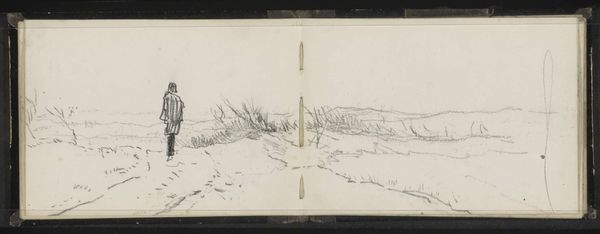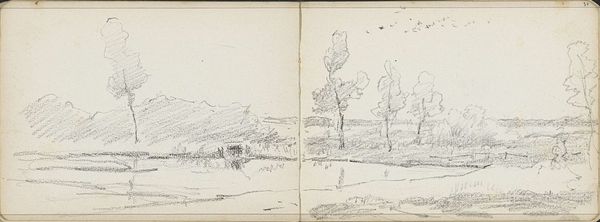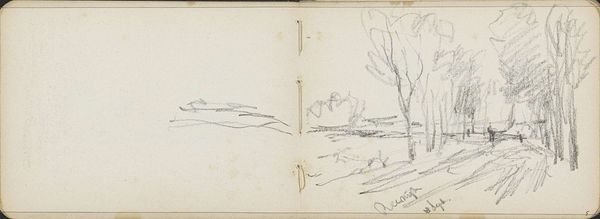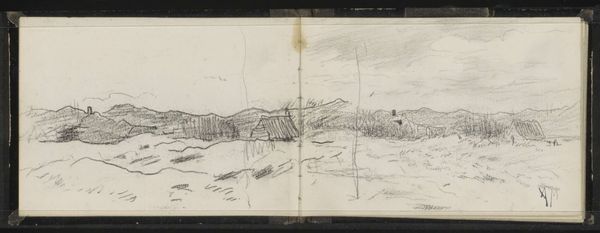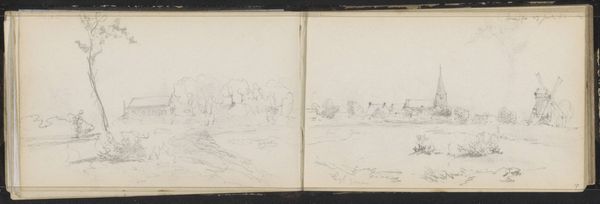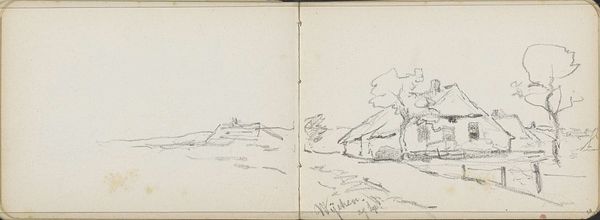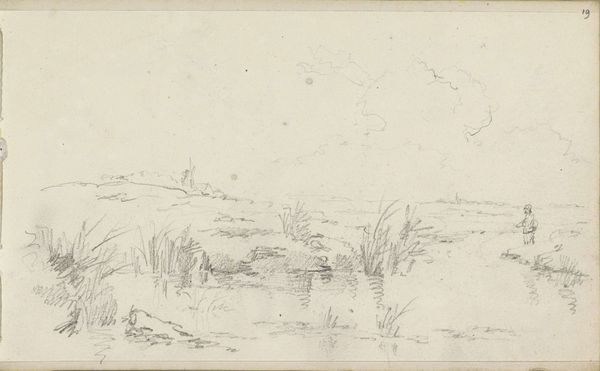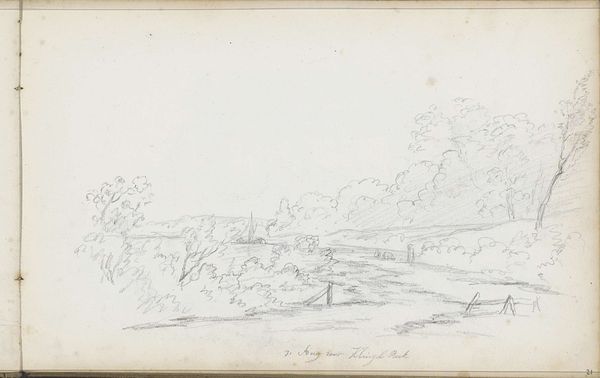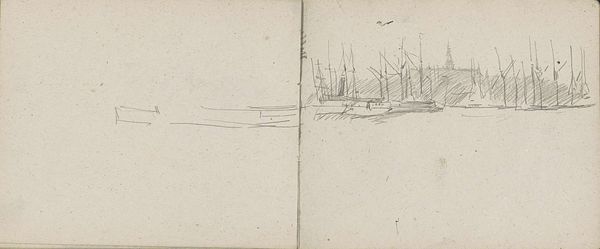
drawing, pencil
#
drawing
#
dutch-golden-age
#
landscape
#
pencil
#
realism
Copyright: Rijks Museum: Open Domain
Editor: This drawing, "Landschap met bomen met kale takken" by Anton Mauve, likely made between 1848 and 1888, uses a pencil to depict a stark landscape. I’m struck by its minimalist composition; it almost feels barren. What can you tell me about it? Curator: Indeed. This drawing resonates with a socio-political quietude, perhaps a silent protest against industrial encroachment upon the Dutch landscape. The skeletal trees, rendered with such deliberate simplicity, aren't just trees. They symbolize a stripping away – of resources, of traditional ways of life. Consider the period: the rise of industrialization directly impacted rural communities. Do you see any connection there? Editor: I hadn’t thought about it that way. It makes the drawing feel less like a simple landscape and more like a commentary on loss. So, you're saying that the artist's choice to focus on bare trees could be seen as a visual metaphor? Curator: Exactly. It prompts us to consider who benefits from landscape art, and whose stories are being told, or more accurately, untold. Whose land is this, really? Whose labor went into shaping it? Editor: I see. I’m used to thinking of art in terms of formal qualities, but the layers of social and political meaning you’ve pointed out make it much more powerful. Curator: That's the beauty of contextualizing art – it becomes a dialogue. Always consider not just what you see, but who gets to see, and who is made invisible by these depictions. Editor: I will keep that in mind. Thank you! This definitely shifts my perspective. Curator: My pleasure. Remember art history is never a neutral telling; we must constantly question the dominant narrative.
Comments
No comments
Be the first to comment and join the conversation on the ultimate creative platform.
